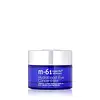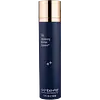What's inside
What's inside
 Key Ingredients
Key Ingredients

 Benefits
Benefits

 Concerns
Concerns

 Ingredients Side-by-side
Ingredients Side-by-side

Water
Skin ConditioningCaprylic/Capric Triglyceride
MaskingGlycerin
HumectantPropanediol
SolventBis-Diglyceryl Polyacyladipate-2
EmollientNiacinamide
SmoothingDicaprylyl Ether
EmollientCetearyl Glucoside
EmulsifyingCetearyl Alcohol
EmollientCetyl Alcohol
EmollientIsosorbide Dicaprylate
Skin ConditioningGlyceryl Stearate
EmollientPEG-100 Stearate
Hydroxypropyl Cyclodextrin
MaskingPalmitoyl Tripeptide-38
Skin ConditioningSaccharide Isomerate
HumectantSodium PCA
HumectantUrea
BufferingTrehalose
HumectantTriacetin
AntimicrobialPolyquaternium-51
Skin ConditioningHyaluronic Acid
HumectantSilanetriol
Phenoxyethanol
PreservativeEthylhexylglycerin
Skin ConditioningSodium Acrylates Copolymer
Lecithin
EmollientPolyacrylate-13
Polyisobutene
Tocopheryl Acetate
AntioxidantAllantoin
Skin ConditioningPanthenol
Skin ConditioningXanthan Gum
EmulsifyingSodium Hyaluronate
HumectantButylene Glycol
HumectantCarbomer
Emulsion StabilisingPolysorbate 20
EmulsifyingPalmitoyl Oligopeptide
CleansingPalmitoyl Tetrapeptide-7
Skin ConditioningAcetyl Hexapeptide-8
HumectantSodium Phytate
Aloe Barbadensis Leaf Extract
EmollientCentella Asiatica Extract
CleansingTamarindus Indica Seed Polysaccharide
Skin ConditioningWater, Caprylic/Capric Triglyceride, Glycerin, Propanediol, Bis-Diglyceryl Polyacyladipate-2, Niacinamide, Dicaprylyl Ether, Cetearyl Glucoside, Cetearyl Alcohol, Cetyl Alcohol, Isosorbide Dicaprylate, Glyceryl Stearate, PEG-100 Stearate, Hydroxypropyl Cyclodextrin, Palmitoyl Tripeptide-38, Saccharide Isomerate, Sodium PCA, Urea, Trehalose, Triacetin, Polyquaternium-51, Hyaluronic Acid, Silanetriol, Phenoxyethanol, Ethylhexylglycerin, Sodium Acrylates Copolymer, Lecithin, Polyacrylate-13, Polyisobutene, Tocopheryl Acetate, Allantoin, Panthenol, Xanthan Gum, Sodium Hyaluronate, Butylene Glycol, Carbomer, Polysorbate 20, Palmitoyl Oligopeptide, Palmitoyl Tetrapeptide-7, Acetyl Hexapeptide-8, Sodium Phytate, Aloe Barbadensis Leaf Extract, Centella Asiatica Extract, Tamarindus Indica Seed Polysaccharide
Water
Skin ConditioningCaprylic/Capric Triglyceride
MaskingGlyceryl Stearate
EmollientCholesterol
EmollientGlycerin
HumectantHydroxyethyl Urea
HumectantButylene Glycol
HumectantSodium Lactate
BufferingPolyglyceryl-6 Palmitate/Succinate
EmulsifyingSodium PCA
HumectantSqualane
EmollientIsocetyl Stearoyl Stearate
EmollientEthyl Macadamiate
Skin ConditioningN-Capryloyl Lysine
EmollientJojoba Esters
EmollientCarnitine
CleansingDimethicone
EmollientSodium Hyaluronate
HumectantUrea
BufferingAminopropyl Ascorbyl Phosphate
AntioxidantSalicornia Herbacea Extract
Skin ConditioningCeramide EOP
Skin ConditioningCeramide NP
Skin ConditioningLinoleic Acid
CleansingLinolenic Acid
CleansingCarnosine
Skin ConditioningCaffeine
Skin ConditioningSalicylic Acid
MaskingTocopherol
AntioxidantPullulan
Caprylyl Methicone
Skin ConditioningSclerotium Gum
Emulsion StabilisingXanthan Gum
EmulsifyingCetearyl Alcohol
EmollientEthylhexylglycerin
Skin ConditioningTriethyl Citrate
MaskingSilica
AbrasiveLecithin
EmollientPhytic Acid
Pentaerythrityl Tetra-Di-T-Butyl Hydroxyhydrocinnamate
AntioxidantTriacetin
AntimicrobialSodium Hydroxide
BufferingPhenoxyethanol
PreservativeLactic Acid
BufferingWater, Caprylic/Capric Triglyceride, Glyceryl Stearate, Cholesterol, Glycerin, Hydroxyethyl Urea, Butylene Glycol, Sodium Lactate, Polyglyceryl-6 Palmitate/Succinate, Sodium PCA, Squalane, Isocetyl Stearoyl Stearate, Ethyl Macadamiate, N-Capryloyl Lysine, Jojoba Esters, Carnitine, Dimethicone, Sodium Hyaluronate, Urea, Aminopropyl Ascorbyl Phosphate, Salicornia Herbacea Extract, Ceramide EOP, Ceramide NP, Linoleic Acid, Linolenic Acid, Carnosine, Caffeine, Salicylic Acid, Tocopherol, Pullulan, Caprylyl Methicone, Sclerotium Gum, Xanthan Gum, Cetearyl Alcohol, Ethylhexylglycerin, Triethyl Citrate, Silica, Lecithin, Phytic Acid, Pentaerythrityl Tetra-Di-T-Butyl Hydroxyhydrocinnamate, Triacetin, Sodium Hydroxide, Phenoxyethanol, Lactic Acid
Ingredients Explained
These ingredients are found in both products.
Ingredients higher up in an ingredient list are typically present in a larger amount.
Butylene Glycol (or BG) is used within cosmetic products for a few different reasons:
Overall, Butylene Glycol is a safe and well-rounded ingredient that works well with other ingredients.
Though this ingredient works well with most skin types, some people with sensitive skin may experience a reaction such as allergic rashes, closed comedones, or itchiness.
Learn more about Butylene GlycolThis ingredient is an emollient, solvent, and texture enhancer. It is considered a skin-softener by helping the skin prevent moisture loss.
It helps thicken a product's formula and makes it easier to spread by dissolving clumping compounds.
Caprylic Triglyceride is made by combining glycerin with coconut oil, forming a clear liquid.
While there is an assumption Caprylic Triglyceride can clog pores due to it being derived from coconut oil, there is no research supporting this.
Learn more about Caprylic/Capric TriglycerideCetearyl alcohol is a mixture of two fatty alcohols: cetyl alcohol and stearyl alcohol. It is mainly used as an emulsifier. Emulsifiers help prevent the separation of oils and products. Due to its composition, it can also be used to thicken a product or help create foam.
Cetearyl alcohol is an emollient. Emollients help soothe and hydrate the skin by trapping moisture.
Studies show Cetearyl alcohol is non-toxic and non-irritating. The FDA allows products labeled "alcohol-free" to have fatty alcohols.
This ingredient is usually derived from plant oils such as palm, vegetable, or coconut oils. There is debate on whether this ingredient will cause acne.
Due to the fatty acid base, this ingredient may not be Malassezia folliculitis safe.
Learn more about Cetearyl AlcoholEthylhexylglycerin (we can't pronounce this either) is commonly used as a preservative and skin softener. It is derived from glyceryl.
You might see Ethylhexylglycerin often paired with other preservatives such as phenoxyethanol. Ethylhexylglycerin has been found to increase the effectiveness of these other preservatives.
Glycerin is already naturally found in your skin. It helps moisturize and protect your skin.
A study from 2016 found glycerin to be more effective as a humectant than AHAs and hyaluronic acid.
As a humectant, it helps the skin stay hydrated by pulling moisture to your skin. The low molecular weight of glycerin allows it to pull moisture into the deeper layers of your skin.
Hydrated skin improves your skin barrier; Your skin barrier helps protect against irritants and bacteria.
Glycerin has also been found to have antimicrobial and antiviral properties. Due to these properties, glycerin is often used in wound and burn treatments.
In cosmetics, glycerin is usually derived from plants such as soybean or palm. However, it can also be sourced from animals, such as tallow or animal fat.
This ingredient is organic, colorless, odorless, and non-toxic.
Glycerin is the name for this ingredient in American English. British English uses Glycerol/Glycerine.
Learn more about GlycerinGlyceryl Stearate is a mix of glycerin and stearic acid.
It is used to stabilize the mixing of water and oil ingredients. By preventing these ingredients from separating, it can help elongate shelf life. It can also help thicken the product's texture.
As an emollient, it helps soften skin and supports barrier-replenishing ingredients.
In cosmetics, Glyceryl Stearate is often made from vegetable oils or synthetically produced.
This ingredient may not be fungal-acne safe
Fun fact: The human body also creates Glyceryl Stearate naturally.
Learn more about Glyceryl StearateLecithin is a term for a group of substances found in the cell membranes of plants, animals, and humans. They are made up of mixture of phospholipids.
This ingredient has emollient and emulsifying properties.
As an emollient, lecithen helps soften the skin and creates a barrier to keep moisture in.
As an emulsifier, it also helps prevent water and oil ingredients from separating. Lecithin can also help ingredients be better absorbed by the skin.
This is because the phospholipids in lecithin produce liposomes. Liposomes help other ingredients get through the skin barrier.
Depending on the source of this ingredient, lecithin may not be fungal acne safe. This is because some sources of lecithin come from soybean oil, which may feed the malassezia yeast that feeds fungal acne.
We recommend reaching out to the brand you are purchasing from to inquire about the source of their lecithin.
Some other names for this ingredient include soy lecithin and deoiled soy lecithin.
Learn more about LecithinPhenoxyethanol is a preservative that has germicide, antimicrobial, and aromatic properties. Studies show that phenoxyethanol can prevent microbial growth. By itself, it has a scent that is similar to that of a rose.
It's often used in formulations along with Caprylyl Glycol to preserve the shelf life of products.
Sodium Hyaluronate is hyaluronic acid's salt form. It is commonly derived from the sodium salt of hyaluronic acid.
Like hyaluronic acid, it is great at holding water and acts as a humectant. This makes it a great skin hydrating ingredient.
Sodium Hyaluronate is naturally occurring in our bodies and is mostly found in eye fluid and joints.
These are some other common types of Hyaluronic Acid:
Learn more about Sodium HyaluronateSodium PCA is the sodium salt of pyroglutamic acid. It is naturally occurring in our skin's natural moisturizing factors where it works to maintain hydration.
The PCA stands for pyrrolidone carboxylic acid, a natural amino acid derivative.
This ingredient has skin conditioning, anti-inflammatory, and humectant properties. Humectants help hydrate your skin by drawing moisture from the air. This helps keep your skin moisturized.
Learn more about Sodium PCATriacetin comes from glycerin and acetic acid. It has antimicrobial properties.
Due to its ability to kill off microorganisms, it can help reduce odor caused by bacteria. Hence, it is a masking ingredient.
Urea is also called carbamide and is the diamide of carbonic acid. In cosmetics, urea is used to hydrate the skin. It also provides exfoliation in higher concentrations.
As a humectant, urea helps draw moisture from the air and from deep within the skin. This helps hydrate your skin. Studies show urea is an effective moisturizer for dry skin conditions. 40% urea is typical in medications for treating eczema and other skin conditions.
Urea has the strongest exfoliation effect in concentrations higher than 10%. It is a keratolytic agent, meaning it breaks down the keratin protein in the top layer of skin. This helps remove dead skin cells and flaking skin.
In medicine, urea has been shown to help increase the potency of other ingredients, such as fungal treatments.
Humans and animals use urea to metabolize nitrogen-containing compounds. Urea is highly soluble in water. Once dissolved, it is neither acidic nor alkaline.
Learn more about UreaWater. It's the most common cosmetic ingredient of all. You'll usually see it at the top of ingredient lists, meaning that it makes up the largest part of the product.
So why is it so popular? Water most often acts as a solvent - this means that it helps dissolve other ingredients into the formulation.
You'll also recognize water as that liquid we all need to stay alive. If you see this, drink a glass of water. Stay hydrated!
Learn more about WaterXanthan gum is used as a stabilizer and thickener within cosmetic products. It helps give products a sticky, thick feeling - preventing them from being too runny.
On the technical side of things, xanthan gum is a polysaccharide - a combination consisting of multiple sugar molecules bonded together.
Xanthan gum is a pretty common and great ingredient. It is a natural, non-toxic, non-irritating ingredient that is also commonly used in food products.
Learn more about Xanthan Gum